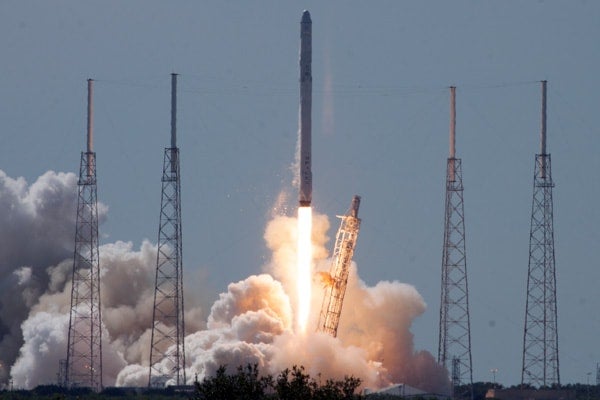
When the SpaceX rocket blew up his experiment, this U of T engineer saw it on Facebook
Published: July 7, 2015
Aaron Persad was on a teleconference call June 28 with his employer, a company that does contract work for NASA, when he saw the news on his phone – it was about NASA, and it wasn’t good.
Persad, a post-doctoral fellow in U of T’s Thermal Dynamics and Kinetics Lab, learned from a Facebook posting by a friend that an unmanned SpaceX spacecraft carrying supplies to the International Space Station had blown apart two and a half minutes after liftoff from Cape Canaveral, Fla.
It was jarring news, to say the least. Persad and his lab colleagues had a small but important experiment on that spacecraft.
A researcher and entrepreneur who hopes to become an astronaut, Persad works for Integrated Space Flight Services as manager of microgravity operations. He was struck by the coincidence that he would be talking with colleagues from the NASA contractor at the very moment the NASA supply mission suffered catastrophic failure.
“But if you want irony, the experiment was supposed to be on a supply mission last October but the experiment got delayed” and when that October mission failed to launch, Persad said, “we were actually happy the experiment wasn’t on that mission.”
The U of T lab where Persad developed the experiment is part of U of T's department of mechanical and industrial engineering.The project involved observing how pure water in a 15 cm by 3 cm glass jar behaves as it leaves earth and goes “into a free fall” when the spaceship becomes supersonic. It could have practical applications – determining where to put input and output values on both water and liquid oxygen containers.
While the glass jar used was the “cream of the crop” in the lab – used on the Space Shuttle in 1998 – there are 10 more jars in the lab to choose from and the plan is to have the experiment on a flight in December.

In the meantime, Persad is continuing his astronaut training and will attend the Embry-Riddle Aeronautical University in Daytona Beach, Fla. in September.(Read more about Persad as an astronaut for hire.)
The SpaceX mission was the third cargo mission in the last nine months to suffer catastrophic failures. In April, a Russian cargo ship burned up upon re-entry and last October an Orbital Sciences Corp. capsule was destroyed in a launch accident in Virginia. Both SpaceX and Orbital Sciences Corp. have contracts with NASA to ship cargo to the space station.
Another Russian cargo ship successfully launched on July 3 and docked at the space station on July 5, delivering food, fuel, oxygen and other supplies.
Persad was not the only student who was shocked when the Falcon 9 rocket propelling the Dragon spacecraft burst into flames. Three South Carolina high school students watched as their experiment dealing with an intricate electronics circuitry blew up on the spaceship. What’s worse, the experiment had also been on the Orbital Sciences ship that caught fire at launch last October in Virginia. On that day, one of the students was knocked over by the blast coming off the launch pad while watching from three kilometres away.
The failed launch also signalled a bad day for SpaceX founder and chief executive officer Elon Musk. The owner of the electric car company Tesla turned 44 on the day of the launch. “Yeah, not the best birthday,” he tweeted.
Others on Twitter acknowledged the setback and, like Persad, focused on the future:
Day 93 Today was a reminder spaceflight is hard. Tomorrow is a new day. Good night from @space_station #YearInSpace pic.twitter.com/IyN9raXReO
— Scott Kelly (@StationCDRKelly) June 28, 2015


